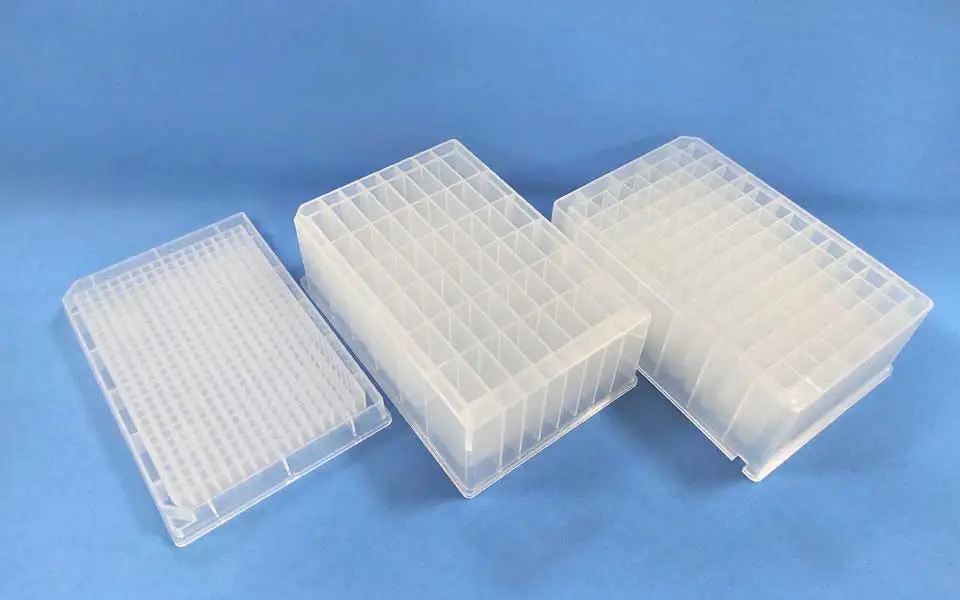Deep Well Plates & Related Consumables for Sale

Deep well plates are commonly used in laboratory settings for a variety of purposes. These multi-well plates offer a large number of wells, typically arranged in a 96- or 384-well format, making them ideal for conducting high-throughput experiments. These plates are often made of high-quality plastic materials that are chemically inert and compatible with a wide variety of sample types, including biological samples such as cell cultures, proteins, and nucleic acids.
One of the primary uses of deep well plates is for sample preparation and storage. These plates can hold large volumes of samples, typically ranging from several milliliters to several hundred milliliters, offering an easy-to-use and efficient way to store and retrieve samples as needed. The wells of deep well plates are often designed with flat bottoms, which makes it easier to transfer samples between wells using automated equipment.
In addition to sample storage and preparation, deep well plates can also be used for a wide variety of applications, including assay development, screening, and optimization. Due to the number of wells available, researchers can perform multiple experiments or tests in parallel, further increasing efficiency and reducing the costs associated with conducting research.
Overall, deep well plates are an essential tool for many laboratory applications, offering a convenient and efficient way to store, retrieve, and assay biological samples. With their versatility and reliability, they form an integral part of many laboratory workflows, enabling faster, more efficient and more productive research.
1
Deep well plates are commonly used in scientific research, particularly in lab experiments involving high-throughput screening and sample storage. These plates come in various formats and well volumes to accommodate different research needs.
2
The standard format of a deep well plate is a 96-well plate, but other formats are also available, including 24-well, 384-well, and 1536-well plates. These different formats offer flexibility in sample capacity and allow for more efficient use of reagents and lab space. For instance, 24-well plates are suitable for small scale studies, while 384-well and 1536-well plates are commonly used for high-throughput screening experiments.
3
In terms of well volumes, deep well plates typically range from 0.5 ml to 2 ml per well. The most commonly used volumes are 1 ml and 2 ml. Larger well volumes are ideal for storage applications, such as storing high-density bacterial or yeast cultures.
4
Some deep well plates have U-bottom wells, while others have V-bottom or conical-bottom wells. The choice of well shape depends on the type of experiment being performed.
Thank you very much for your interest in Yikang-Med!
Our service does not end with the sale of the products, pls fill out below form and we will answer your questions and feedback as soon aspossible.
Contact us now for sorts of pipette tips and other medical consumables!